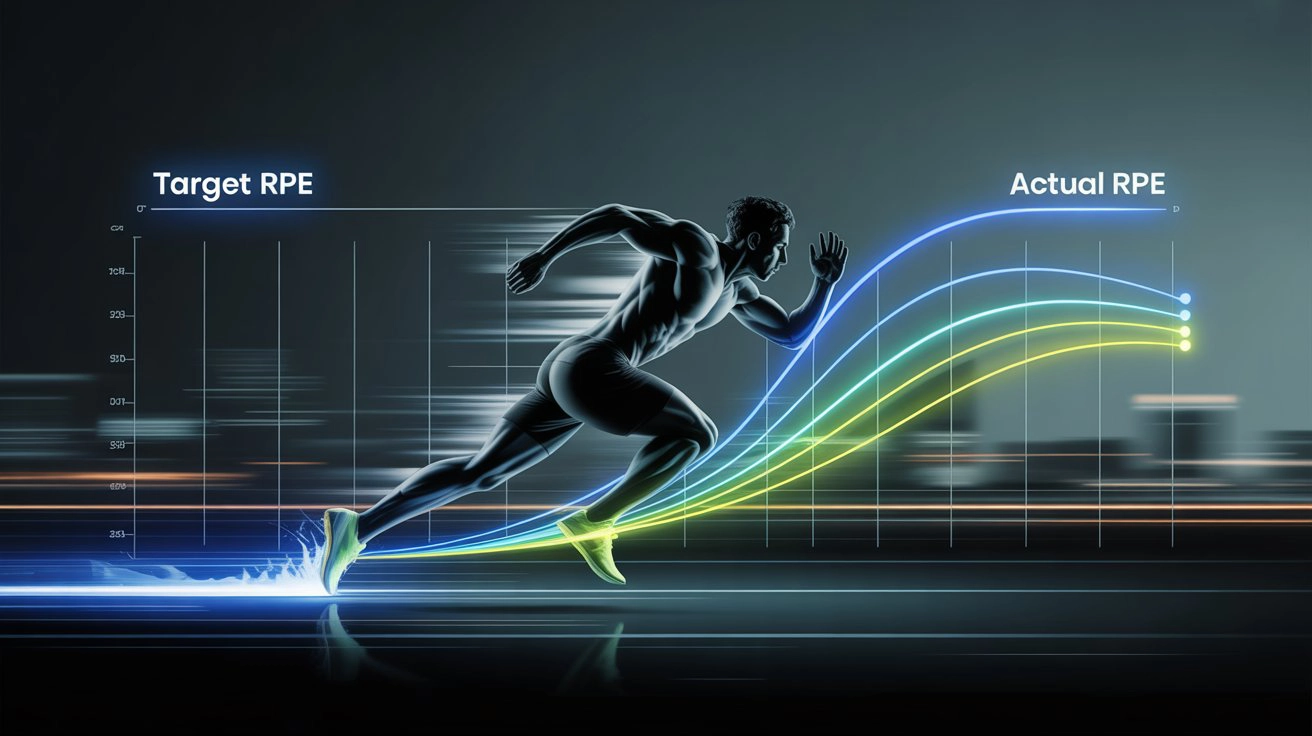In Afitpilot, RPE — Rate of Perceived Exertion — is more than just a number on a scale from 1 to 10.
It’s one of the core signals we use to keep your training plan alive, responsive, and evolving around you.
Every time you log a session, you’re doing more than ticking a box. You’re telling the AI coach how the session actually felt in your body and mind, not just how it looked on paper. That feedback shapes what comes next.
What We Aim For in RPE
When Afitpilot prescribes a session, it includes a target RPE — the effort level we expect you to hit based on the purpose of that workout.
- Easy recovery runs might target RPE 3–4, keeping your heart rate and stress load low.
- Strength progression days might target RPE 7–8, enough to challenge you without maxing out.
- Key performance tests or competition simulations might go RPE 9–10, where you’re pushing close to your limit.
These targets aren’t random. They’re set according to your training phase, weekly load balance, and long-term goals.
What the Athlete Actually Records
When you finish your session, you log how it really felt.
And this is where things get interesting.
Sometimes, the recorded RPE matches the target perfectly — ideal.
Other times, the gap is wide:
- Planned RPE 6 → Recorded RPE 8
→ The workout was harder than intended, maybe due to fatigue, heat, stress, or lack of recovery. - Planned RPE 8 → Recorded RPE 5
→ You had more in the tank than expected — perhaps a sign that you’re adapting faster than projected.
How This Affects Future Adjustments
Afitpilot doesn’t just store your RPE as a statistic. It uses it as a decision trigger.
- If your RPE is consistently higher than planned, the AI may lower next week’s load, adjust rest periods, or swap in lighter sessions to avoid overtraining.
- If your RPE is consistently lower than planned, the AI may increase intensity, add volume, or advance your progression faster.
- If RPE fluctuates wildly, the AI will look at your sleep, recovery, and external stress patterns (if tracked) before deciding whether to stabilize or push.
In short, every RPE entry nudges your training path — sometimes subtly, sometimes significantly.
Why Honesty Matters
If you log RPE casually or just guess, the AI’s adjustments lose accuracy.
RPE works best when it reflects your true perceived effort, combining muscular fatigue, breathing difficulty, and mental strain.
A good habit is to log RPE immediately after your session, before your mind smooths over the hard parts.
From Data to Direction
With enough RPE history, Afitpilot can start spotting patterns that even experienced athletes and coaches might miss:
- Hidden fatigue build-up before an injury risk point.
- Undervalued recovery days that need more emphasis.
- Unrealized performance potential in areas you didn’t know you could push harder.
This is the bridge between the plan and your reality — and the more accurate your logs, the stronger that bridge becomes.
In Afitpilot, RPE isn’t just feedback. It’s the steering wheel.
Every session you log is a chance to tell the system exactly how you’re feeling, so it can drive you toward your goals with precision.
Ressources:
- Borg’s Rate of Perceived Exertion Scale
- OMNI Scale for Resistance Exercise
- The Science of Autoregulation
Articles:
- Tempo Training in Afitpilot: Control Speed, Boost Performance
- 🧠 Afitpilot Adaptive Coaching Transformation – Daniel’s Real Results with AI and Feedback Loops
- Unlock Your Potential: The Science of RPE Discrepancy in Training


Leave a Reply